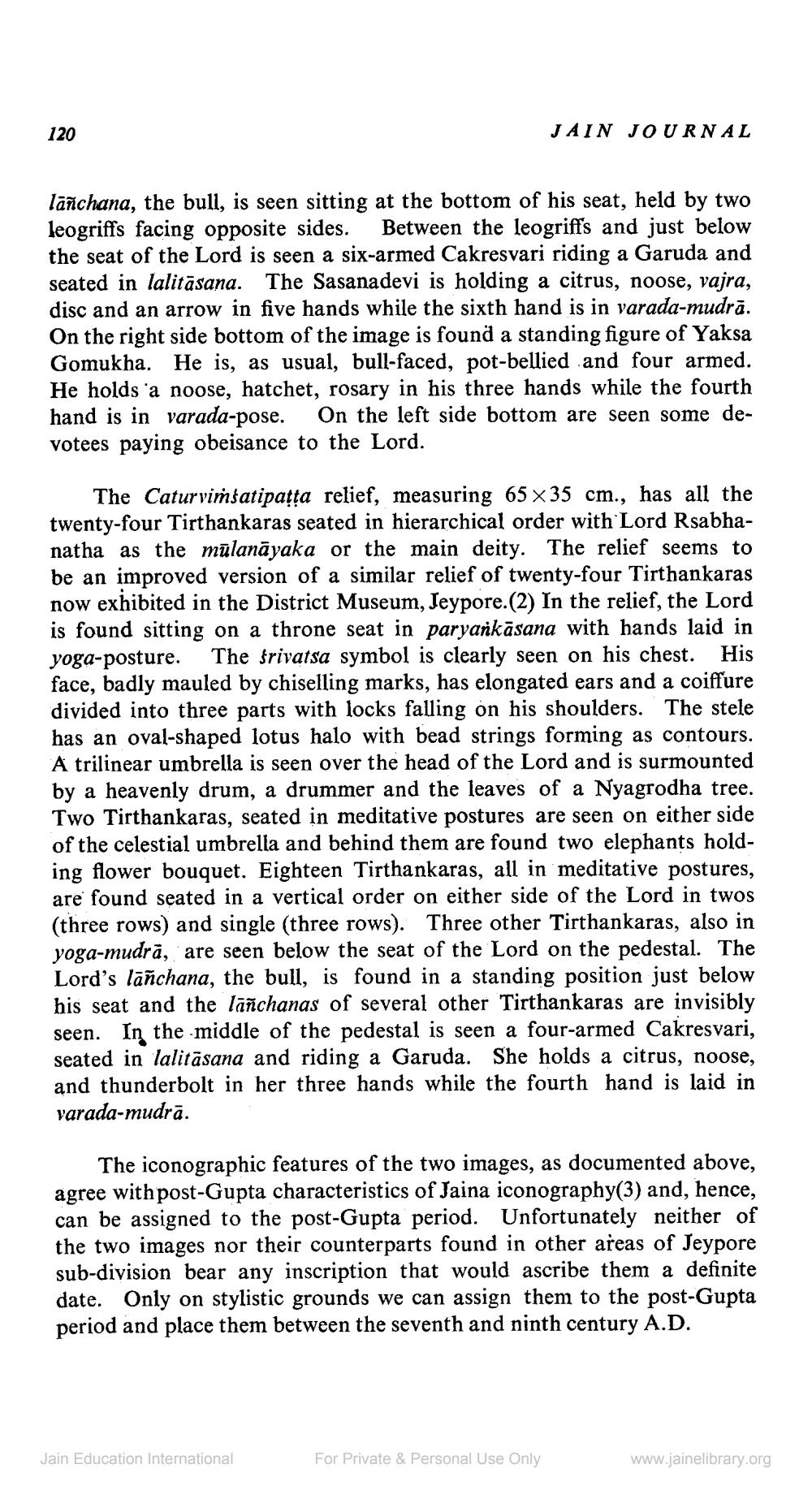________________
120
JAIN JOURNAL
lañchana, the bull, is seen sitting at the bottom of his seat, held by two leogriffs facing opposite sides. Between the leogriffs and just below the seat of the Lord is seen a six-armed Cakresvari riding a Garuda and seated in lalitāsana. The Sasanadevi is holding a citrus, noose, vajra, disc and an arrow in five hands while the sixth hand is in varada-mudrā. On the right side bottom of the image is found a standing figure of Yaksa Gomukha. He is, as usual, bull-faced, pot-bellied and four armed. He holds 'a noose, hatchet, rosary in his three hands while the fourth hand is in varada-pose. On the left side bottom are seen some devotees paying obeisance to the Lord.
The Caturviņšatipatta relief, measuring 65 x 35 cm., has all the twenty-four Tirthankaras seated in hierarchical order with Lord Rsabhanatha as the mūlanāyaka or the main deity. The relief seems to be an improved version of a similar relief of twenty-four Tirthankaras now exhibited in the District Museum, Jeypore.(2) In the relief, the Lord is found sitting on a throne seat in paryankāsana with hands laid in yoga-posture. The frivatsa symbol is clearly seen on his chest. His face, badly mauled by chiselling marks, has elongated ears and a coiffure divided into three parts with locks falling on his shoulders. The stele has an oval-shaped lotus halo with bead strings forming as contours. A trilinear umbrella is seen over the head of the Lord and is surmounted by a heavenly drum, a drummer and the leaves of a Nyagrodha tree. Two Tirthankaras, seated in meditative postures are seen on either side of the celestial umbrella and behind them are found two elephants holding flower bouquet. Eighteen Tirthankaras, all in meditative postures, are found seated in a vertical order on either side of the Lord in twos (three rows) and single (three rows). Three other Tirthankaras, also in yoga-mudrā, are seen below the seat of the Lord on the pedestal. The Lord's lāñchana, the bull, is found in a standing position just below his seat and the lāñchanas of several other Tirthankaras are invisibly seen. In the middle of the pedestal is seen a four-armed Cakresvari, seated in lalitasana and riding a Garuda. She holds a citrus, noose, and thunderbolt in her three hands while the fourth hand is laid in varada-mudrā.
The iconographic features of the two images, as documented above, agree with post-Gupta characteristics of Jaina iconography(3) and, hence, can be assigned to the post-Gupta period. Unfortunately neither of the two images nor their counterparts found in other areas of Jeypore sub-division bear any inscription that would ascribe them a definite date. Only on stylistic grounds we can assign them to the post-Gupta period and place them between the seventh and ninth century A.D.
Jain Education International
For Private & Personal Use Only
www.jainelibrary.org




